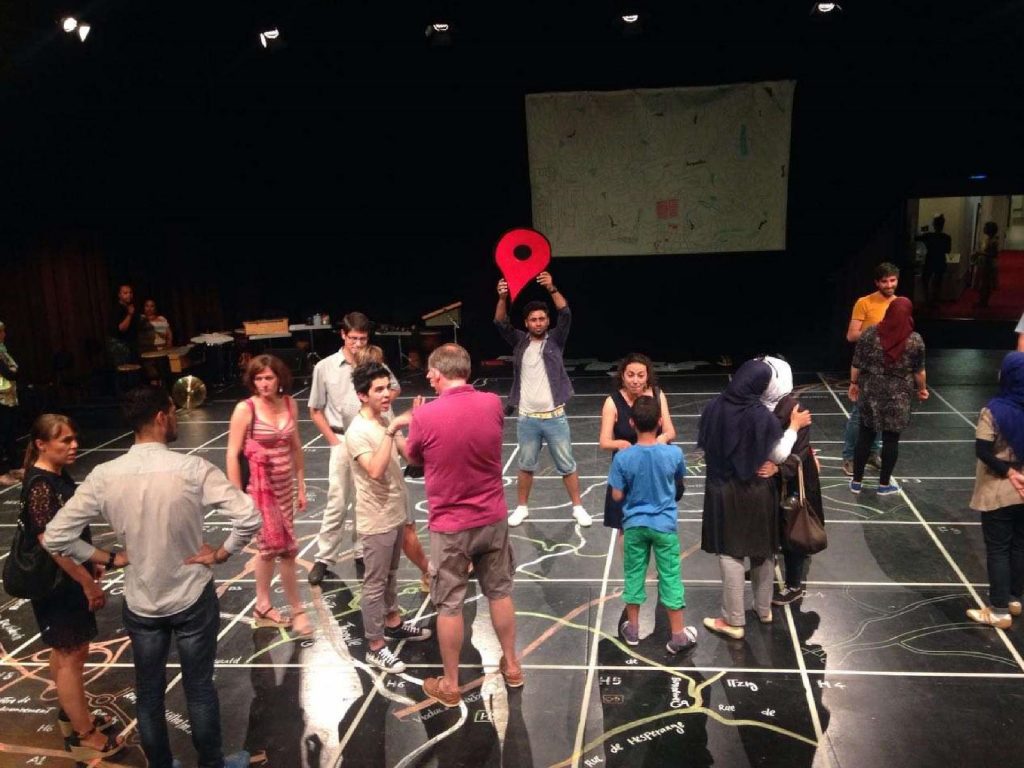multi-disciplinary performance project Luxemburg 2016
During the month of August 2016, I worked on a multi-disciplinary performance project, bringing together a team of international artists along with participants wo were residents in various refugee camps in Luxembourg at the time. The Foundation EME (Ecouter pour mieux s’entendre // Listening for better understanding) had commissioned Catherine Elsen (Artistic Director) and I (Scenographer) to join Theatre-pedagogue Bassam Ghazi in the delivery of the project. The Philharmonie Luxembourg, supporting the project, had made the working spaces available. The result of the week was showcased on 26th August at the Philharmonie’s ‘Espace Decouverte’ and on 27th August at the ‘Last Summer Dance‘ Festival in Erpeldange.
The concept of the project is inspired by John Lennon’s song “Nobody told me“:
“Everybody’s talking and no one says a word
Everybody’s making love and no one really cares
There’s Nazis in the bathroom just below the stairs
Always something happening and nothing going on…”
As people from all over the world, we can connect through feelings of dislocation be it through political displacement, globalisation but also through our own individual stories and choices in life. We might all share the same physical ground of Luxembourg city, but the virtual and tangent realities, underlying everyday life actions, can reveal our diversity.
Through theatre, music and scenography we explored two grounds of reality: the physical one, in this case Luxembourg City, and the mental, present in dreams, thoughts and memories.
I designed two maps in my workshop with the participants. A “real” map of Luxembourg city was gradually drawn by the participants, dressed up like engineers on the stage, and a “dream” map, was created by participants’ memories of their homes in Aleppo, Baghdad, Damascus. Besides the map dichotomy, different musical scores and choreographed pedestrian movement, evoked the everyday life routines and the interrupting daydream/memories/personal experiences.
French philosopher, Michel Certeau describes the action of Walking in the City as an act of creative resistance and active place-making, antagonising the stale and limiting architecture and dynamics of the urban space: “… they are walkers, Wandersmanner, whose bodies follow the thicks and thins of an urban “text” they write without being able to read it. These practitioners make use of spaces that cannot be seen; their knowledge of them is as blind as that of lovers in each other’s arms. The paths that correspond in this intertwining, unrecognised poems in which each body is an element signed by many others, elude legibility. It is as though the practices organising a bustling city were characterized by their blindness.”
In this project, participants shaped a new reality through what Certeau calls “modes of operation”. The physical signs of the city map, brushed by the participants, are read in a new way by themselves and the audience. They “write the urban texts” through their memories of places left behind or taken over by war, bombs, and suffering but that remain forever present in their lives and memories today.
